
Geodetski Vestnik
Scope & Guideline
Advancing Earth Sciences through Open Access Innovation.
Introduction
Aims and Scopes
- Geospatial Data Analysis and Management:
The journal emphasizes methodologies related to the analysis, management, and application of geospatial data, including the integration of advanced technologies like GIS, UAV photogrammetry, and laser scanning. - Land Cadastre and Property Valuation:
A core area of focus is the study and improvement of land cadastre systems, property valuation methodologies, and the legal frameworks governing land use and ownership. - Cultural Heritage and Historical Geodesy:
Research on the preservation, documentation, and analysis of cultural heritage sites through geodetic methods is a consistent theme, reflecting the journal's commitment to historical geodesy. - Environmental Monitoring and Assessment:
The journal also covers studies related to environmental monitoring, including water quality assessment and the impact of natural disasters, highlighting the relevance of geospatial methods in addressing environmental challenges. - Technological Innovations in Surveying:
There is a strong emphasis on technological advancements in surveying techniques, including the use of GNSS, laser scanning, and remote sensing, which are pivotal for improving measurement accuracy and efficiency.
Trending and Emerging
- Integration of Remote Sensing with Geospatial Analysis:
Recent publications have highlighted the integration of remote sensing technologies with geospatial analysis, showcasing advancements in data acquisition and interpretation for various applications, including environmental monitoring and urban planning. - Use of Artificial Intelligence in Geodesy:
There is a notable increase in research exploring the application of artificial intelligence and machine learning techniques in geodesy, particularly for data processing, predictive modeling, and automating surveying tasks. - Sustainability and Spatial Planning:
Emerging themes focus on sustainability practices in spatial planning, reflecting a growing awareness of the need for environmentally responsible land use and development strategies. - 3D Spatial Modeling and Visualization:
The trend towards 3D spatial modeling and visualization methods is gaining traction, enabling more sophisticated analyses and representations of spatial data, particularly in urban environments. - Cultural Heritage Preservation through Geospatial Technologies:
An increasing number of studies emphasize the use of geospatial technologies in the preservation and management of cultural heritage sites, highlighting the intersection of technology and historical conservation.
Declining or Waning
- Traditional Surveying Techniques:
There appears to be a waning interest in traditional surveying techniques, as the focus shifts towards more advanced and automated technologies like UAVs and laser scanning. - Historical Documentation of Land Use:
Research centered on historical land use documentation has decreased, possibly due to the increasing availability and reliance on modern geospatial data and technologies. - Basic Geodesy Education:
Discussions surrounding basic education and training in geodesy have become less prominent, indicating a potential shift towards more specialized and advanced topics within the field. - Legal Frameworks in Land Management:
While still relevant, the exploration of legal frameworks governing land management is appearing less frequently, suggesting a shift towards more technical and applied research themes. - General Environmental Studies:
General environmental studies without specific geospatial applications are less common, as the journal increasingly prioritizes studies that integrate geospatial technologies for environmental assessments.
Similar Journals

Journal of Geography-Chigaku Zasshi
Navigating the Terrain of Knowledge in GeographyJournal of Geography - Chigaku Zasshi is a distinguished publication that serves as a crucial platform for the dissemination of research in the realm of geography and earth sciences. Published by the TOKYO GEOGRAPHICAL SOC in Japan, this journal is indexed with an ISSN of 0022-135X and an E-ISSN of 1884-0884. With a scope that includes Earth-Surface Processes, Geography, Planning and Development, Geology, Geophysics, and Global and Planetary Change, it provides comprehensive coverage of pressing geographical issues. Although it holds a Q4 ranking in multiple categories as of 2023, the journal presents an opportunity for researchers, professionals, and students to contribute meaningful findings in a diverse and competitive landscape. The Journal of Geography actively promotes scholarly dialogue by embracing the complexities of our planet and encouraging innovative approaches to geographical inquiries. This open-access journal aspires to bridge gaps and foster collaboration among scholars worldwide, underscoring its importance in understanding and addressing contemporary geographic challenges.
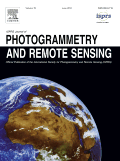
ISPRS JOURNAL OF PHOTOGRAMMETRY AND REMOTE SENSING
Elevating Knowledge in Photogrammetry and Remote SensingISPRS Journal of Photogrammetry and Remote Sensing is a prestigious publication at the forefront of the fields of photogrammetry and remote sensing. Established in 1989 and published by Elsevier, this journal has consistently maintained a strong academic standing, currently holding a top-tier Q1 ranking across multiple categories, including Atomic and Molecular Physics, Computer Science Applications, and Engineering. This reflects its vital contribution to advancing knowledge and technology in these dynamic fields. The journal is not only a vital resource for researchers and professionals but also serves as an essential academic platform for students keen on delving into the latest developments in geospatial sciences. The journal operates under a non-open access model, ensuring that submitted research adheres to the highest standards of scholarly communication and integrity. With an impactful focus, it brings innovative research, comprehensive reviews, and significant case studies to a global audience. The ISPRS Journal is crucial for those aiming to enhance their understanding and application of remote sensing techniques within various scientific disciplines.

Remote Sensing
Exploring Earth's Mysteries Through Remote SensingRemote Sensing is a highly esteemed journal published by MDPI, dedicated to the domain of Earth and Planetary Sciences. With an impressive impact factor reflected in its rank of #16 out of 195 in the general Earth and Planetary Sciences category, this journal achieves a commendable 92nd percentile among its peers, indicating its significant contribution to the field. Since its inception in 2009 as an Open Access journal, it has enabled researchers, professionals, and students from around the globe to access high-quality, peer-reviewed articles that delve into the latest advancements in remote sensing technologies, methodologies, and applications. Based in Switzerland, Remote Sensing serves as a vital platform for disseminating innovative research that supports and enhances our understanding of Earth's processes and environments, ensuring scientific knowledge remains freely accessible and impactful.
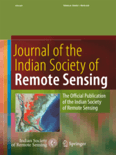
Journal of the Indian Society of Remote Sensing
Pioneering Insights into Remote Sensing TechnologiesJournal of the Indian Society of Remote Sensing, published by SPRINGER, stands as a prominent contribution to the fields of Earth and Planetary Sciences and Geography, Planning and Development. With an ISSN of 0255-660X and an E-ISSN of 0974-3006, this esteemed journal has been in circulation since 1973, showcasing a rich repository of research and advancements in remote sensing applications, methodologies, and technologies, specifically within the Indian context and beyond. The journal's impact is underscored by its placement in the Q2 category of both Earth and Planetary Sciences and Geography as of 2023, ranking impressively in the Scopus database with significant percentiles. With the intent to bridge the gap between theory and practical application, it invites scholars, researchers, and professionals to contribute innovative studies that enhance our understanding of remote sensing and its implications in various domains. The Journal of the Indian Society of Remote Sensing is a vital resource for anyone looking to remain at the forefront of research in this dynamic field.
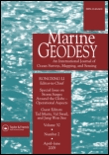
MARINE GEODESY
Exploring the Depths of Marine DynamicsMARINE GEODESY, an esteemed journal published by Taylor & Francis Inc, delves into the intricate field of oceanography, aiming to contribute profoundly to the understanding of marine spatial dynamics and geophysical processes. With an ISSN of 0149-0419 and an E-ISSN of 1521-060X, this journal has a commendable standing, currently classified in the 2023 Q2 quartile, reflecting its influential presence in the realm of Earth and Planetary Sciences, particularly oceanography, where it ranks 49th out of 145 journals. Since its inception in 1977 and its ongoing publication until 2024, MARINE GEODESY has been dedicated to disseminating groundbreaking research, case studies, and reviews that are crucial for scholars, professionals, and students engaged in the exploration of marine environments. While currently not an open-access journal, it nevertheless offers vital insights into marine geospatial analytics and geodesy, augmenting the knowledge base necessary for tackling contemporary challenges in marine science and geography.

Revue Internationale de Geomatique
Exploring Interdisciplinary Insights in GeomaticsRevue Internationale de Geomatique (ISSN: 1260-5875, E-ISSN: 2116-7060) is a prestigious journal published by TECH SCIENCE PRESS, dedicated to advancing the field of geomatics. This journal serves as a vital platform for disseminating significant research findings, cutting-edge methodologies, and innovative applications within the realm of spatial data and technology. With an emphasis on interdisciplinary studies, it fosters collaboration among researchers, professionals, and students across various domains, including environmental science, urban planning, and geographic information systems (GIS). Although not an open-access journal, Revue Internationale de Geomatique maintains a rigorous peer-review process ensuring the publication of high-quality articles that contribute to the evolving landscape of geomatics. Given its relevance and commitment to scholarly excellence, this journal is a crucial resource for advancing knowledge and practices in the ever-growing field of spatial information science.
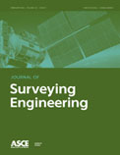
JOURNAL OF SURVEYING ENGINEERING
Shaping the Future of Surveying through Rigorous ResearchJOURNAL OF SURVEYING ENGINEERING, published by the ASCE-Amercian Society of Civil Engineers, is a pivotal resource in the field of Civil and Structural Engineering, specifically focusing on the advancements and methodologies within surveying practices. Established in 1980, this journal has established itself as a reliable source of high-quality research, boasting an impressive 2023 Q2 ranking in its category, demonstrating its impact and relevance in the engineering community. The journal features rigorously peer-reviewed articles that encourage innovative approaches and solutions in surveying engineering, maintaining a consistent publication schedule through 2024. Although it operates under a traditional access model, the journal remains an influential platform for disseminating essential findings and methodologies. By fostering knowledge exchange among researchers, professionals, and students, the JOURNAL OF SURVEYING ENGINEERING continues to play a critical role in shaping the future of civil engineering research and practice.
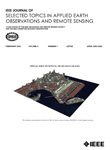
IEEE Journal of Selected Topics in Applied Earth Observations and Remote Sensing
Exploring the Frontiers of Applied Earth Observations.IEEE Journal of Selected Topics in Applied Earth Observations and Remote Sensing is a premier peer-reviewed journal published by the IEEE-INST ELECTRICAL ELECTRONICS ENGINEERS INC, focused on advancing the field of Earth observation and remote sensing technologies. With an impressive impact factor, this journal ranks in the top quartile (Q1) for both Atmospheric Science and Computers in Earth Sciences, underscoring its significance and influence in the academic community. Open access since 2020, it facilitates broader dissemination of research findings to enhance global visibility and accessibility for researchers, professionals, and students alike. Spanning the years from 2008 to 2024, the journal covers a myriad of topics that highlight innovative applications of remote sensing data and technologies in addressing environmental challenges. With a Scopus ranking placing it in the 91st and 89th percentiles, respectively, in its categories, the journal serves as a vital resource for advancing scholarly discourse and collaboration in Earth sciences.

JOURNAL OF GEODESY
Discovering the Shape of Our World, One Study at a TimeJOURNAL OF GEODESY, published by SPRINGER, is a premier academic journal dedicated to advancing the field of geodesy and its related disciplines. With an impact factor reflecting its high citation rate and rigorous peer-review process, this journal occupies a distinguished place in the academic community, categorized within the Q1 quartiles for Computers in Earth Sciences, Geochemistry and Petrology, and Geophysics as of 2023. The journal addresses various critical topics affecting our understanding of Earth’s shape, gravity field, and rotational dynamics, thus providing vital insights for researchers, professionals, and students alike. Derived from a legacy that spans from 1995 to 2024, the journal continues to publish significant contributions that foster growth in Earth and planetary sciences, with rankings that place it within the top tier of its categories: 10th in Geophysics, 13th in Geochemistry and Petrology, and 9th in Computers in Earth Sciences, all reflecting percentile rankings above 88%. Although Open Access options are not currently available, the journal remains an essential resource for advancing geodetic research across the globe. Explore the latest findings and connect with leading experts in the field through this highly regarded platform.
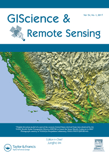
GIScience & Remote Sensing
Transforming Data into Earthly DiscoveriesGIScience & Remote Sensing, published by Taylor & Francis Ltd, stands as a leading journal in the realm of Earth and Planetary Sciences, holding a prestigious Q1 ranking. Since its transition to Open Access in 2022, the journal has significantly broadened its reach, enabling researchers, professionals, and students across the globe to disseminate and access cutting-edge research related to geographic information science and remote sensing technologies. With a focus on publishing high-quality, peer-reviewed articles that contribute to the understanding of the Earth’s processes, environments, and interactions, this journal not only supports advancements in scientific knowledge but also fosters interdisciplinary collaboration. Based in the United Kingdom, GIScience & Remote Sensing continues to pave the way for innovative methodologies and applications, solidifying its vital role within the scientific community.